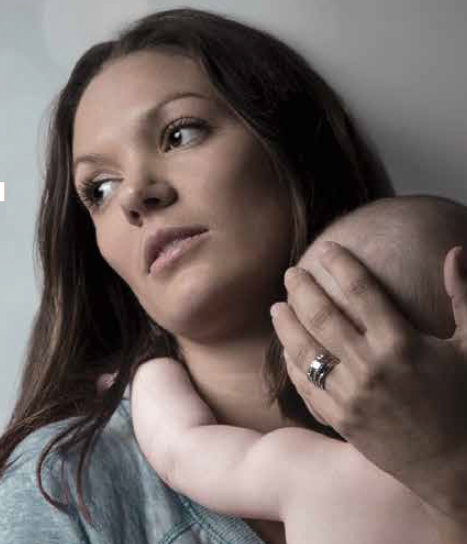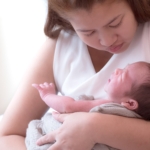In 2015, we first reported on SAGE-547 (SAGE Therapeutics), a new medication for the treatment of severe postpartum depression (PPD). SAGE-547, now called brexanolone, is an allosteric modulator of GABAA receptors. This drug was initially under investigation for the treatment of refractory seizure disorders but it turned out to be a good antidepressant. Sage Therapeutic’’s Hummingbird Phase 3 Program consisted of two phase 3 randomized, placebo-controlled trials to evaluate the efficacy, safety, tolerability, and pharmacokinetics of brexanolone for treating moderate and severe PPD. Preliminary results were presented at the annual meeting of the American Psychiatric Association in May.
Participants were between the ages of 18 and 45 years and were less than 6 months postpartum at the time of screening. Participants were eligible for the study if they experienced an episode of major depression no earlier than the third trimester of pregnancy and no later than four weeks postpartum.
Brexanolone for Moderate PPD
Women enrolled in the study on moderate PPD had baseline HAM-D scores between 20 and 25. The women were randomly assigned to receive either a 60-hour infusion of brexanolone 90 µg/kg/hr (n = 54) or placebo (n = 54).
Women receiving brexanolone had a greater reduction in HAM-D scores from baseline to hour 60 as compared to the group receiving placebo (mean -14.2 points vs -12.0 points; P < .05). Women in the brexanolone group continued to have lower HAM-D scores at 72 hours (P < .01) and on day 7 (P < .05).
Adverse events were reported by 49.0% of the women receiving brexanolone and 45.3% of those receiving placebo. Most were mild and occurred during the first 24 hours of infusion. The most commonly reported AEs were headache (17.6% of the active-treatment group vs 11.3% of the placebo group), dizziness (9.8% vs 7.5%), infusion site pain (9.8% vs 3.8%), nausea (9.8% vs 3.8%), somnolence (7.8% vs 3.8), and fatigue (5.9% vs 3.8%).
There were three serious adverse events in the brexanolone group (one patient each with fatigue, dizziness, and altered state of consciousness with fainting) and one in the placebo group (headache). Two patients receiving active treatment discontinued drug use because of an adverse event.
Brexanolone for Severe PPD
Women enrolled in the study on severe PPD had baseline HAM-D scores above 25. These participants were randomly assigned in a 1:1:1 ratio to receive a 60-hour infusion of brexanolone 60 µg/kg/hr (n = 47), a 60-hour infusion of brexanolone 90 µg/kg/hr (n = 45), or placebo (n = 46).
In the lower-dose group, women receiving brexanolone had a greater reduction in HAM-D scores from baseline to hour 60 as compared to the group receiving placebo (mean -19.9 points vs -14.0 points; P < .05). Women in the higher-dose group also had a greater (but less robust) reduction in HAM-D scores (-17.7 points vs. -14.0 points).
What’s Next?
Brexanolone represents a novel approach to the treatment of postpartum mood disorders. One of the most exciting things about brexanolone is the rapidity of the response, within a few days. Because antidepressants typically take at least 2-4 weeks to kick in, an antidepressant agent with rapid onset of action would be particularly appealing to women with severe PPD, particularly women with suicidality.
What is somewhat disappointing is that the results from the phase 3 trials were less impressive than those seen in the phase 2 trial. In that smaller study, participants receiving brexanolone (n=10) experienced a 19.0 point mean reduction in HAM-D scores, compared to 8.4 points in the placebo group (n=11). Seven of the ten participants receiving brexanolone achieved remission from depression (as defined as a HAM-D score of < 7), only 1 of the 11 placebo patients experienced remission.
In the phase 3 trials, brexanolone was more effective than placebo, but the difference was much less dramatic. In women with moderate PPD, the difference was only around 2 points (-14.2 vs. -12.0 points) between active treatment and placebo. The magnitude of the reduction was greater in the women with severe PPD (-19.9 vs. -14.0 points). Although the smaller phase 2 study yielded somewhat different results, it should be noted that randomized controlled trials of conventional antidepressants usually have high placebo response rates, and the difference between placebo and active drug tends to be smaller in patients with less severe illness. It will be useful get more specific details regarding response and remission rates, which were not included in the abstracts reporting data from the phase 3 trials.
We are eager to find out more about the duration of this response. Will a brexanolone infusion result in remission or will the woman require subsequent infusions to avoid relapse? We also look forward to getting more information regarding brexanolone in breast milk. (Breastfeeding women included in the brexanolone studies did not breastfeed while receiving treatment.)
One of the obvious downsides of brexanolone is that it must be given intravenously and thus may require inpatient hospitalization in order to administer. Although this might seem like an obstacle, I suspect that many women with severe PPD would easily sign on for this type of treatment if they had a significant chance of improving within a few days. We could also argue that being in the hospital, even for a few days, might be beneficial, in that it could provide some respite from the demands of caring for a newborn. However, this will significantly increase the cost of treatment.
In April, Sage Therapeutics submitted a New Drug Application (NDA) to the U.S. Food and Drug Administration (FDA) for the intravenous formulation of brexanolone for the treatment of postpartum depression. Regulators agreed to give Sage an expedited priority review for brexanolone, so we should be getting news by the end of the year. Sage Therapeutics is also moving forward with the development of a similar compound (SAGE-217) which is intended for once-daily oral dosing. In an open trial of patients with major (non-postpartum) depression, it appears that SAGE-217 was effective and well-tolerated. We look forward to hearing more about these novel treatments for PPD.
Ruta Nonacs, MD PhD
First Postpartum Depression Therapy Promising in Phase 3 Trials (Medscape – free subscription)
American Psychiatric Association (APA) 2018. Abstracts P5-168 and P5-169, presented May 7, 2018.








will they be able to breast feed? If not, how long would they need to avoid breast feeding after the infusion is complete
Good question. Women did not breastfeed for 72 hours and then resumed. Hopefully we will have more data on breastfeeding in the near future.
As the daughter of a mother who had postpartum depression 64 years ago( when I was five) and who suffered from the treatments of the day during a hospitalization and judgement for the rest of her life, I question why it has taken so long for there to be this therapy. I pray this is a good medication and that it helps the one in nine women who suffer.